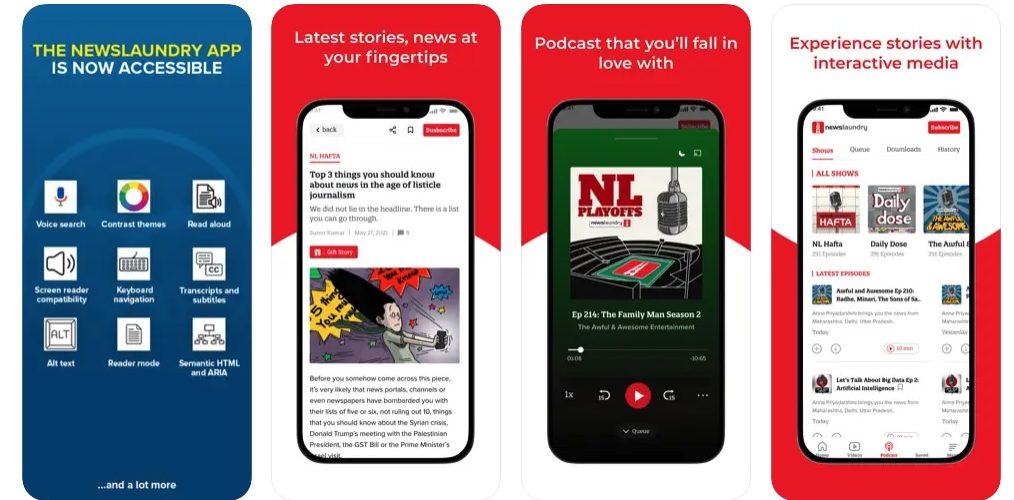
Newsletter
Newsletter
Consumers are still feeling squeezed. We cover how publishers can retain cost-conscious subscribers looking for subs savings.
19th January 2024

In the Pugpig weekly media bulletin, Pugpig’s consulting services director Kevin Anderson and digital growth consultant James Kember distill some of the best strategies and tactics that are driving growth in audiences, revenue and innovation at media businesses around the world.
If you want to know more about how we are working with publishers like you, get in touch at info@pugpig.com.
The latest economic data has shown that the UK, the US and the Eurozone all saw slight increases in inflation in December, and while inflation has declined, consumers continue to feel squeezed. They are looking for where to cut their spending, and subscriptions, media or otherwise, are on the chopping block.
A recent survey commissioned by subscription management platform Zuora and featured in the Press Gazette indicated that 37% of current news and magazine subscribers in the UK are considering cancelling their subscriptions. More than half of the respondents (51%) said the reason was a “need to budget”, implying that external economic factors are having an impact. A further 22% are spending too much money on different subscriptions and also feeling the squeeze.
UK publishers don’t have much room to manoeuvre. Only 19% of the UK adult population currently have a news or magazine subscription, according to Zuora, and other surveys are equally pessimistic. The Reuters Institute’s Digital News Report 2023 showed that only 9% of the UK population paid for online news last year, and the country sits at the bottom of a league table of peers, significantly behind Norway, where 39% of the population pay, and less than half the rate of the US (21%). Moreover, data from Statista has shown that this rate has returned to its 2019 level after a Covid bump. Given the large number of subscribers considering cancelling it’s likely to shrink back to around the 6-7% mark that was common in the mid-to-late 2010s. The reader revenue model risks going backwards in the UK.
This comes against a backdrop of the softening of ad revenue, which is predicted to decline by 8% this year for news titles. For many publishers, if there’s a return to the subscription revenue they were seeing in 2014-18, it will mean their business becomes unviable unless they find other sources of revenue.
Of course, data from Zuora shows that news and magazines are just one of the many subscriptions that Britons have. Media (news and magazines) sit in the middle of the table, with home entertainment, music and gaming taking up the top three spots. Plants, alcohol and dating apps prop up the rear. Diving into these numbers shows that subscription leaders not only have a clear advantage in terms of market penetration but they also are facing less of a risk of churn. Roughly 82% of the UK population subscribe to home entertainment, but only 13% of those users are looking to cancel. It’s slightly higher for the 52% with a music subscription, where 19% are looking to cancel but this falls significantly short of the 37% considering cancelling their news or magazine subscription. Even gaming, gyms and banking memberships which around 26-30% of the population use have a lower risk of cancellation rate, standing at approximately 30%.
Of those who told Zuora they were looking to cancel across all types, 22% said were doing it as they “spend money on different subscription[s]”. However, with a large external cost pressure, probably, the fact that the broader population is less likely to consider cancelling other subscriptions will have an impact. Ultimately, news and magazines are not as popular as music or home entertainment.
The Press Gazette hypothesised that the low penetration of paid news could be a unique factor in the UK market. The key differentiator between the UK and other countries “may be the extent of free news provision in the UK from the likes of the BBC, Guardian and Mail Online.” However, this often overlooks a major source of free content in the US, local TV stations. A poll last September found that local TV news topped the list of news sources, outpacing even news websites by 41% to 33%, respectively. Fox News and Facebook came next with 28% of respondents saying that they had used these sources in the last week.
Of course, there is a simple solution: Making subscriptions cheaper so they fit more easily into a consumer’s budget. However, this is easier said than done. Publishers are feeling the same cost pressure that is fueling inflation in the wider economy and many have responded by increasing their prices.
For example, Iliffe Media Group has recently increased cover prices “earlier than budgeted” in response to the “risks from economic pressures and rising costs”. This rise in cost is understandable, but digital news subscriptions from the leading UK publishers are currently 19% higher than they were a year ago, against a backdrop of an overall inflation rate of around 4% in the UK. Moreover, the wider subscription market put up prices last year. Netflix for example, raised its UK subscription by around 12-14% depending on the tier. This overall market inflation will be putting pressure on the 22% of users who are concerned about spending on other subscriptions as well as impacting overall budgeting for all cost-sensitive news subscribers.
UK news subscriptions are expensive compared to more popular services such as home entertainment. A full Telegraph sub now costs £269, The Times is £312 and the FT is the UK’s priciest at £369. This compares to the most popular home entertainment subscriptions Netflix (£216), Amazon Prime (£95) and Disney+ (£110).
However, lowering prices isn’t generally an option, and it risks repeating the original sin committed by publishers as they digitised: Giving content away for less than it’s worth. Original journalism is an expensive business, and media companies have spent years cutting costs as their revenue hasn’t kept pace with their costs. Unlike newer subscription businesses, such as Amazon Prime, which have been built from scratch in recent years, and can be cross-subsidised from other parts of Amazon’s empire, publishers have tried to develop digital subscription models to offset stomach-churning declines in their traditional print businesses.
Ultimately, publishers need to accept that they compete for attention and subscription spend not just against other publishers but a range of digital services that often operate internationally providing them with a much larger addressable market. Moreover, when a consumer looks to cut their subscription spending, publishers find that they are competing against Netflix, Spotify and other media and entertainment services.
So how to win attention and decrease churn? As we spoke at length about in our Retention Economics Report last year, retention is relationship management, and publishers have a range of relationships with their audiences. The main message of the report was to maximise ARPU across engagement segments. Strong, enduring relationships are based on the quality and frequency of engagement, so publishers should focus on strategies that deliver this. This means building more engaging products that encourage users to consume content. An example of this is some of the work we’ve been doing recently at Pugpig Consulting. We’ve been working on several projects to better leverage a publisher’s push notifications to encourage the audience to engage with the app. Across several publishers, we have seen engagement increase by 60% once effective, consistent push notification strategies are in place. Once in the app, we work with publishers to develop a personalised experience first for user segments and eventually for individual users to encourage them to return.
Also, as we’ve mentioned before, the approach to engagement must start at the very beginning of the relationship. This means onboarding journeys for registered users as well as subscribers, a dynamic approach to paywalled content to allow users to build engagement before being asked to pay and a streamlined approach to registration. Die Zeit is a great example of a publisher adopting this approach to subscriptions, with their “First Day Subscription” retention programme. Retention efforts need to begin at the point when you begin a relationship with a user.
Furthermore, building direct relationships with audiences is essential. Last summer we discussed the importance of this, due to the massive impact of the realignment of social platforms, the threat of AI and the decrease in consumption of news by younger audiences. And as we highlighted last week in the Reuter’s Institute trends report, publishers are concerned that social traffic will fall even further in 2024. If retention is about building relationships, the key is not to be reliant on connecting with your audiences on other people’s platforms. As we have said, the key to owning your relationships with your audience is to develop personalisation and different products that focus on different news topics to appeal to news avoiders. Build more engaging news formats to appeal to younger audiences, such as audio and video. Lean in to social but don’t expect free traffic. You’re going to have to invest in audience development and not just off-platform.
Finally, with the wealth of data now available to publishers there is the opportunity to leverage more information to determine the propensity to subscribe, or in the case of retention, the propensity to churn. For example, European media giant Mediahuis increased retention by over 14% in three months by integrating propensity-to-buy, next-best-action and churn models into their customer acquisition and retention efforts.
However, building data models from scratch is out of reach for many small or medium-sized organisations without a data science team. But fear not, this is where technology providers can play a role. Customer data platforms such as BlueConic offer a data modelling functionality out of the box and have a team of data scientists who can help implement complex requests. There is also an increasing number of data-modelling-as-a-service companies such as Sub(x), whose business model is to help subscription businesses tailor offers to their audience through automated A/B testing.
Overall, the Zuora survey should highlight a risk for UK publishers. A significant percentage of an already small audience is considering cancelling their subscription. Deeply discounted trial subscriptions might seem to be a good way to keep subscriber numbers high, but publishers must avoid the mistakes of the past and undercut their pricing power with cut-rate deals. Subscription prices are a factor, and some publishers will want to consider how their rates compare with non-publishing competitors. However, the primary focus should be on improving engagement through better products with a clearer value proposition and becoming a more important component of a user’s life. Focus on your audience’s needs and build a great product.
Here are some of the most important headlines about the business of news and publishing as well as strategies and tactics in product management, analytics and audience engagement.

Newsletter

Newsletter

Newsletter

Newsletter

Newsletter